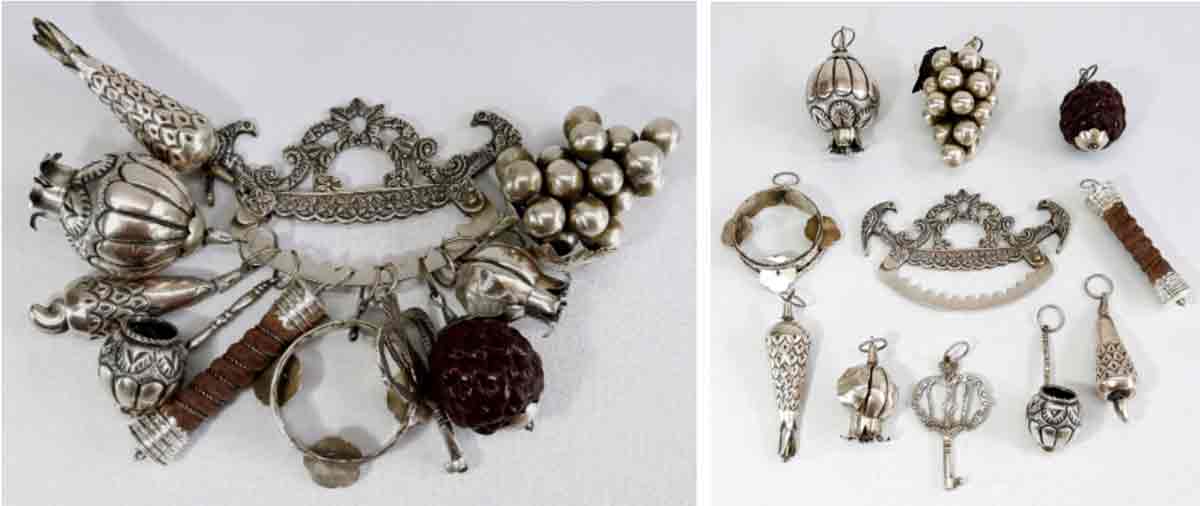Interpretation by Natalia Iraci Sareri

Balangandãs represent the fusion of African goldsmithing and Brazilian symbolism. At the time of the colonization of Africa, black women and goldsmiths were brought to Brazil and enslaved. There, from customary traditions of the country of origin, these symbolic jewelry pieces were created, as a spiritual protection. Although these jewelry pendants were created in captivity, they still represent the power and freedom of black women in Brazil.

The Balangandãs, which are still found today as jewelry in modern versions, have a profound meaning and symbolism. But also an important historical background. The black women who were shipped to Brazil and enslaved there, developed jewelry pendants, which - as it is common in many African traditions - should offer them spiritual protection against the "evil eye". Thereby, many Brazilian and African symbols merged and were used individually according to the personal belief and needs. These individually chosen symbols in form of pendants, also called 'pencas de balangandã', are held by a strikingly designed chain, which represents a remarkable shape. The chain, which is called 'nave', represents the ship that brought them from Africa to Brazil.
But why do these pendants represent the freedom and power of black women, when they were created in captivity? - The oppressor and owner of the enslaved women did not know what meaning these pendants had for them and decorated these women with the jewellery during important ceremonies, but also during activities such as selling on the streets. This chain with the pendants was usually attached to the belt, not knowing by the owner, that this should thus protect important parts of the woman's body.
